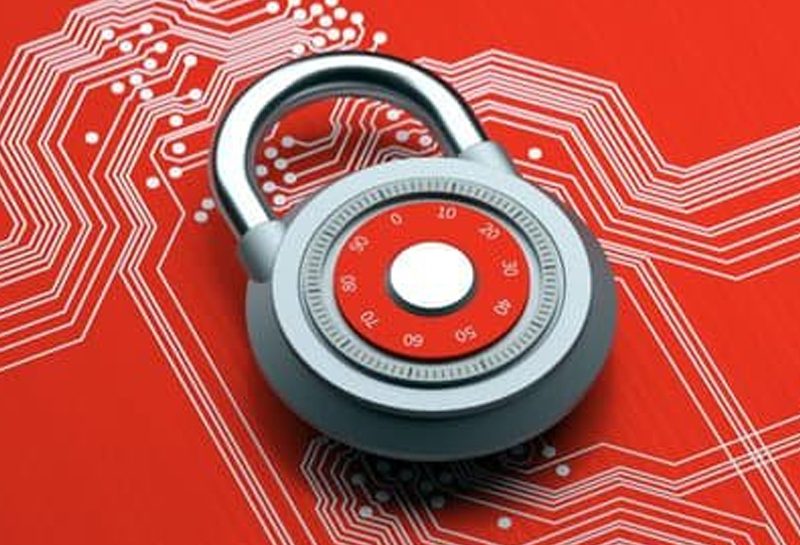The theme of this year’s World Mental Health Day is Mental Health at Work - a major issue for all employers. In the UK alone, it’s estimated that around 15% of workers have an existing mental health condition. That is probably the tip of the…

Azeem Butt, University of Salford, UX Researcher & Cyberpsychologist.
Bridging the gap between research and practice is an essential component of understanding the relatively new concept of cyberpsychology, indicated Azeem Butt at his ABP presentation on September 8th. Working from home has changed the dynamics of patterns of work and people are having to learn to adapt, with varying degrees of success, People can enjoy a greater work/life balance but for many the it means isolation and potential burnout. Development of the means of meaningful work and effective collaboration is perhaps one of the most challenging but there are many unknowns and we all need to stay informed as we transition into the digital age.
Use of technology can bring considerable benefits and is not necessarily bad but the way it is used needs to be fully understood by everyone and then embraced, with the idea of maximising the benefits while mitigating the inevitable risks of use. You can’t avoid technology: the most important element is to be able to ask the right questions as to why and how it is being used. We should all question our own use of technology.
The questions which need to be addressed are:
• What is Cyberpsychology?
• How is it relevant in modern times?
• What has really changed in the last year for our ways of working?
• What are the main challenges of remote working?
• How do we explain the challenges of remote working
• How to look after our digital wellbeing individually
• How to support yourself and others in the digital workplace
• Future considerations
• References and recommended reading
What is Cyberpsychology?
It is the study of the interaction between human beings, society and technology. It is about how the rise of technology may affect humanity now and in the future both at a macro, societal level and at an individual level. As this is a rapidly evolving field, there is a long list of subtopics or subject areas which are covered, as detailed on the accompanying slide.
How is it relevant in modern times?
The most obvious application is researching the impact of problematic use of the internet, gaming consoles and social media on mental health. Work in “Computer Forensics” has been pioneered by Dr. Mary Aiken, Professor or Cyberpsychology at Capitol Technology University, Washington DC and visiting professor at UEL and University College, Dublin. Work is also being undertaken in a range of related areas including Design and Artificial Intelligence ethics, Human Values, VR, and, perhaps the most relevant for Business Psychologists, Digital Wellbeing and its effect on mental wellbeing and productivity, amongst many others in this expanding area.
What has really changed in the last year for our ways of working?
In 2019, 27% were working from home: by the end of 2020 this had risen to an estimated 37%. A staggering 85% of employees actually wanted a hybrid model but only 32% of organisations could confidently arrive at an ideal figure for those working from “a usual place of work”. The remainder were unsure and needed more evidence as to whether working from home had sufficiently positive benefits for the organisation. While most organisations recognised that there were considerable savings in time wasted in commuting, evidence of improvements in productivity are inconclusive and these are borne out by some screen time stats, which showed that there had been a
• 76% increase in the use of mobile, mostly for pleasure purposes
• 45% increase in the use of laptops
• 22% more time using tablets
• 34% more time was spent in front of the television
What are the main challenges of remote working?
Some of the main changes resulting in problems with home working included:
• Work based relationships are more difficult to maintain: informal conversations so crucial to working relationships are rarely possible
• Digital literacy varies across individuals
• Back to back online meetings do not deliver the opportunity for feedback, and can result in burnout from digital fatigue.
• Working for longer hours and less efficiently.
• We become too distracted to notice stress levels and convince ourselves that we have to cope and it is all part of the job.
• The ability to work efficiently from home varies from person to person. However, what is effective for everyone is the shared experience and “checking in“ on a regular basis.
How do we explain the challenges of Remote Working?
One of the key differences working from home is the online “disinhibition” effect, where people feel a lack of restraint and behave in ways they would not in face to face situations. These can affect relationships in the “workplace” and can have detrimental effects and increased instances of bullying.
Individual differences can be exaggerated in an online situation and effective working requires a full understanding of these challenges:
• Differences in digital literacy can show up in technical capabilities
• Some people are by their nature less tolerant of others who may have inferior technical skills
• Differences in personality types can flag up preferences for social contact “I’m fine” is the oft heard words for “I’m struggling at home”
• Different people have different coping mechanisms, and every day we underestimate the ability of some groups of people with their coping mechanisms
• Everyone has different personal sets of circumstances and contexts in which to operate.
Disinhibition can have two main effects:
• Benign disinhibition, where personal truths are shared online
• Toxic disinhibition, where less care is showed for others
Both of these can result from at least partial dismantling of boundaries. What is clear however, is that we are not hardwired for working on a screen which does not give feedback and many of us make errors in behaviour which we may regret later.
Digital Fatigue
A key area is recognising and understanding Digital Fatigue
We may not be aware of it but touch and physical contact are linked to our brain structure and mechanisms. These are associated with perceived “rewards”. Physical contact and touch deprivation strip away from us an ability to “trade off” rewards and physical contact. Additionally screen brightness can have damaging effects with insomnia kicking in.
Digital distraction – the myth of “multi-tasking”
There is the potential for cognitive overload and “feeling drained” as a result of constant interruptions and task switching. Multi-tasking is a myth: this is something we do not do well or naturally and in any case we cannot perform more than one task at once. What we should be focusing on is “task switching” and our ability to improve this skill is an essential part of addressing efficiency and potential fatigue.
Our behaviours are also influenced by our ability in the areas of
• Exogenous or stimulus driven processing vs
• Endogenous or goal driven processing:
Switching from one task to another can take an average of 22 mins following switching from one task to another, although some people take considerably more time and other less. Perhaps we should try to train ourselves as “supertaskers”, but at the same time remembering that we are only capable of focusing on one task at a time.
How do we look after our digital wellbeing individually?
We should better understand our habits, abilities and preferences and recognise that we are not superhuman.
We should:
• recognise the pressure to remain contactable
• acknowledge unconscious digital habits
• observe habits in real time. We need to ask ourselves, should we really be “engaging in this activity”? What purpose does it serve?
Some digital wellbeing lifesavers:
• delete unnecessary apps
• spend time outside in the fresh air
• manage expectations with friends and family
How should we support ourselves during work?
• Managing expectations with clients
• Focus on one activity at a time
• Allow for quiet time during breaks
• Turn of notifications after work has finished
• Set out of office emails out of working hours
• Reduce clutter and distractions
• Allow others to help you during working hours
• Keep open channels of communication to avoid isolation
• If possible take time off when feeling stressed or overwhelmed
How should we support others at work?
We should:
• Lead by example so as not to make others feel that they should be contactable outside work
• Cultivate a sense of presence and meaningful engagement
• Check in as a group once a week
• Break the gap in communication
• Allow openness and emotional intelligence to thrive
• Get support from senior management
Large tech companies have made great strides in engaging with their employees, by simply taking the attitude that technology should improve life and not detract from it. Google has even developed a digital wellbeing toolkit for Covid-19.
There are many areas where there is a paucity of evidence and insufficient understanding. However there are two main areas which emerge and which could benefit from further research:
• A comparison between job performance, mental health and job satisfaction in the context of office vs remote working
• A qualitative longitudinal study which assess the changes in stress levels when remote working for longer periods of time
In conclusion, the most important thing is to be attentive to employee needs before it is too late to take effective remedies. There should be a prevailing attitude of it being “OK to ask for help” and companies should be aware of stress and mental health issues which not only affect individuals but also teams and hence the organisations themselves. Good job performance leads to good mental health which in turn leads to job satisfaction. Managing stress levels is crucial for maximising job performance and for longer periods of working.
1. Cybercognition – Lee Hadlington (recommended book)
2. The Cyber Effect – Mary Aiken (recommended book)
3. Cyber Fish – https://thecyberfish.com/
4. Digital Mindfulness – https://digitalmindfulness.net/
5. Championing digital wellbeing across the workplace – https://www.forbes.com/sites/amyblankson/2021/07/05/why-its-on-leaders-to-champion-digital-wellness-in-the-post-pandemic-workplace/?sh=7778658d1a37
6. Business and individual attitudes for homeworking study – https://www.ons.gov.uk/employmentandlabourmarket/peopleinwork/employmentandemployeetypes/articles/businessandindividualattitudestowardsthefutureofhomeworkinguk/apriltomay2021#toc
7. Lianne Kerlin human values research paper – https://www.bbc.co.uk/rd/publications/human-values-psychology-digital-age
8. Digital Screen Time During the COVID-19 Pandemic: Risk for a Further Myopia Boom? – https://www.ncbi.nlm.nih.gov/pmc/articles/PMC7390728/
9. Virtual reality exposure therapy for posttraumatic stress disorder (PTSD): a meta-analysis – https://www.ncbi.nlm.nih.gov/pmc/articles/PMC6713125/
10. Centre for humane tech (example of design ethics in practice) – https://www.humanetech.com
11. https://www.psychiatrictimes.com/view/psychological-exploration-zoom-fatigue – article about zoom fatigue
12. https://www.lenstore.co.uk/research/health-cost-of-screen-time/ – study by lenstore regarding screen time
13. https://journals.aom.org/doi/abs/10.5465/AMBPP.2020.20452abstract – smartphone addiction, information overload & job performance research paper
14. https://www.psychiatrictimes.com/view/dopamine-receptors-human-brain – dopaminergic pathways research
15. https://wellbeing.google/our-commitment/ – Google’s commitment to digital wellbeing.
Azeem Butt is contactable on LinkedIn to answer any questions or to exchange ideas https://www.linkedin.com/in/azeem-butt-10b483114/



